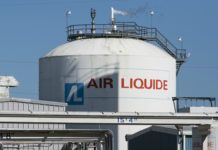What does industry see as the perfect formula for growth? Ask leaders what they envision in that scenario and one thing is clear—they want stability, whether it be in politics, the regulatory environment or market dynamics.
Each plays its own role in an owner’s ability to predict profit, and if all were manageable and predictable Louisiana would be sitting pretty. “The perfect world scenario would be very boring to the average person,” says David Dismukes, executive director of LSU’s Center for Energy Studies. “When you’re dealing with big companies in the petrochemical space, they like boring. They like things that are stable and not moving. That means everything—overseas growth, wages, interest rates, input commodity prices. And then, obviously, government rules and regulations. It’s true with everything.”
The Trump administration has already made some of those wishes come true, particularly when it comes to regulations and taxes. “Throughout most of the Obama administration there was a lot of stability but not a lot of certainty,” says Dismukes. “Right now, I think you’ve got both, or at least a better sense of certainty about where things are going. This is probably a very good year—and a good series of years—for the petrochemical industry.” As further economic fuel, commodity prices and wages are relatively low and stable as well.
Still, there are flies in the ointment, namely Louisiana’s continuing budget struggles and the revised Industrial Tax Exemption Program. In June 2016, Gov. John Bel Edwards placed restrictions on ITEP, giving local governing bodies a seat at the table when tax exemption decisions are made, and forcing companies applying for those exemptions to demonstrate job creation or job retention—or both—to merit an exemption.
Louisiana Chemical Association President Greg Bowser would like to see the ITEP program returned to a more centralized state-managed process, while still allowing for greater input from local taxing authorities. In such a scenario, taxing authorities would continue to receive notice of an exemption request and provide feedback. “You would apply to the department, the department notifies the taxing authority, the taxing authority has an opportunity to comment, and they can still turn it down.”
That, he says, would make the process easier for an owner to navigate and create the perception that state government supports industry, something that is sorely lacking in 2018.

Kate MacArthur, president of the Ascension Economic Development Corporation, is cautiously optimistic that the turmoil over ITEP will stabilize in 2018, but also feels that changes need to be made. “I think Louisiana has a challenge in that regard and that’s where we really need to figure out how to improve,” MacArthur says. “I think everybody claims that we’re business friendly. Realistically, we make it very difficult.”
Don Pierson, secretary of Louisiana Economic Development, says some of the reluctance to the revised ITEP comes from “change resistant” voices, but adds that he is working with various entities to analyze and improve the process. He says the governor’s executive order establishes accountability on behalf of the citizens so that industry can provide a far more committed approach to what they will provide in exchange for tax abatements.
Pierson agrees that stability, in its various forms, is paramount and universal for attracting and retaining business. “It’s not that we have to have the lowest tax rate, but we need the ability to say, ‘Here are the parameters, here’s what you can plan on, here are the commitments we’re going to make,’ and from an industry perspective allow them the confidence of certainty.” He feels the state is making some headway in that regard, pointing to $26 billion in new investments announced in 2016-17, representing 20,000 direct and indirect jobs and more than 13,000 retained jobs.
A freeze on ozone standards
The Environmental Protection Agency’s ozone attainment standard is another moving target that Bowser, MacArthur and others would like to see stabilized. Last summer, EPA fully implemented the 2015 National Ambient Air Quality Standards, which reduces acceptable ground-level ozone to 70 parts per billion. Previously, officials had planned to delay implementation, but then withdrew a one-year hold on the standard after several states filed suit.
The decision was undoubtedly disappointing for Baton Rouge’s industrial complex, as they were already in compliance with the 2008 standard of 75 parts per billion. “You work hard to attain the standard and it takes so long for EPA to certify it, that by the time you’ve gone through the process you’re out of attainment again,” Bowser says.
“If we could work on that, that would be great,” MacArthur adds, whose area is included with Baton Rouge. “Every time we get close to attainment, all of a sudden they kick us out again. That’s been a real problem.”
It’s a costly proposition, they say, because it provides an unfair advantage to neighboring parishes and states when competing for business. “We have a 17,000-acre mega-site—of those owners that would locate there, most would likely have some type of air emissions,” MacArthur says. “The cost of additional equipment needed (in a non-attainment area) is quite high, which is huge when comparing to nearby St. James Parish, which is in attainment.”
A transformed infrastructure
MacArthur would also like to see a radically transformed infrastructure that includes an expanded interstate system and commuter rail. A new Mississippi River Bridge would be nice, too. Her region is impacted severely by interstate and highway bottlenecks.
“Additional road capacity, highways, railroad extensions … we could use some more of that,” she says. “Maybe even better access to the water for the remaining properties that we have. And right at this exact moment, I would take a highway on the west side with another bridge point over to the east side, in order to avoid that travel snarl at the Mississippi River Bridge in Baton Rouge.”
She’s ecstatic about the possibility of a Baton Rouge-New Orleans Inter City Rail, as it would likely include stops along her region’s industrial corridor. The Baton Rouge Area Foundation is advocating for intercity rail between Baton Rouge and New Orleans on existing tracks. Studies say that $262 million in upgrades would bring the tracks up to standards for intercity rail. Recommended train stops are downtown and the health district in Baton Rouge, Gonzales, LaPlace, Louis Armstrong New Orleans International Airport and the Union Passenger Terminal next to the Superdome in New Orleans. Proponents says the intercity rail would lead to a “super region” capable of competing with larger metropolitan areas such as Houston, as well as alleviate interstate traffic and provide improved evacuation routes.
LCA’s Bowser is encouraged by Baton Rouge’s newly announced $350 million, five-year interstate expansion project, but in a perfect world he would like to see a better funding model for transportation that provides a process for continually updating and expanding roads to get ahead of the game. “This is really about your human capital. You can’t move the people, and that’s frustrating,” he adds.
In regards to the state’s waterways, many state leaders are clamoring for deeper, more consistently maintained river channels, saying an increase in channel depths would lead to increased cargo capacities and an ability to handle larger vessels. The need for a more dependable means of dredging remains a persistent problem. Both the ports and the U.S. Army Corps of Engineers are largely dependent upon state and federal money, and without it little can be done.
“It’s quite a challenge, because we rely on the federal government to help us maintain this river traffic that’s vital to the state and nation,” says Pierson. “It’s just a tremendous logistics chain that needs to work to keep business, industry and commerce moving ahead, and the silting in of the channels can become quite an obstacle.” According to data provided by the Ports Association of Louisiana, about 400,000 jobs and $20 billion in personal earnings are directly attributable to the ports. In the lower Mississippi River alone, more than 500 million tons of cargo are moved on an annual basis, contributing to the state’s ranking among the top tonnage port locations in the country.
Pierson is hopeful that the newly-opened Water Institute of the Gulf in Baton Rouge will facilitate innovative approaches to the problem, and possibly sidestep any funding problems. Opened in January, the Water Institute is a not-for-profit, independent applied research and technical services institution with a mission to help coastal and deltaic communities.
“Technologies developed there could potentially make river pathways self-scouring, or slow down the buildup of silt through erosion control or other features,” he adds. “That would be an innovative approach that goes beyond just asking for more money. In other words, how do we execute a smart, long-term strategy to make sure that the dollars that we invest are being invested in an effective way?”
Reality check
No matter how perfect the scenario, Dismukes says there are certain economic truisms that can’t be ignored. The most disconcerting of which is that Louisiana is probably at the tail end of the current growth cycle. In fact, Dismukes doubts that the state will see the unbounded capacity growth of the last couple of years no matter the scenario.
“Everything in life has diminishing returns,” he adds. “There is no such thing as constant and perpetually increasing returns in anything. This wave is already starting to fade out, so to suggest that it’s going to continue in a linear fashion into the next two decades isn’t reasonable.
“Don’t get me wrong. We’ve still got other opportunities for growth, but you’re not going to see the kind of growth that you’ve seen over the last eight years.”








